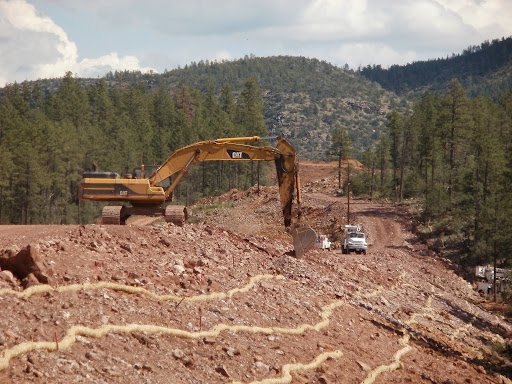Wattles help prevent sediment pollution
Wattles help prevent sediment pollution

Photo courtesy of Ken Wilson/KDA
The Doubtful Canyon project on SR 260 uses wattles, which are the snake-like objects on the slope. A wattle is a tube filled with straw that slows down runoff.
When it comes to preventing sediment from being washed out of construction sites and into adjacent water sources, there’s a low-tech solution that proves very useful. It’s called a wattle....
A what?
Funny name aside, a wattle is used for sediment control and provides an efficient way to slow down storm water runoff.
Wattles are basically tubes filled with straw, but when used in conjunction with other measures, they reduce the possibility of sediment pollution.
ADOT goes to great lengths to prevent sediment from its construction projects from being washed into adjacent creeks and streams during storms. On projects where excavated material can be washed away, the contractor has to submit a Stormwater Pollution Prevention Plan that describes the measures that will be taken to prevent sediment runoff.
Very often, wattles are a part of that plan.
ADOT Senior Resident Engineer Tom Goodman explains wattles are typically placed on embankment slopes and act sort of like a dam.
“As water hits the wattle, the water kind of ponds up behind the wattle. This gives the sediment time to settle. Then the water goes down with less sediment,” said Goodman, adding that more wattles are usually placed down the hill and will continue to filter out the sediment.
Rock check dams are sometimes used for the same purpose. They’re similar to straw wattles, but are made up of piles of rocks ... they work in the same way to filter out sediment.
Wattles are used in just about every project and sometimes are left on the slopes adjacent to highways. The straw wattles deteriorate in three to five years, giving vegetation time to take root and stabilize the slopes.

